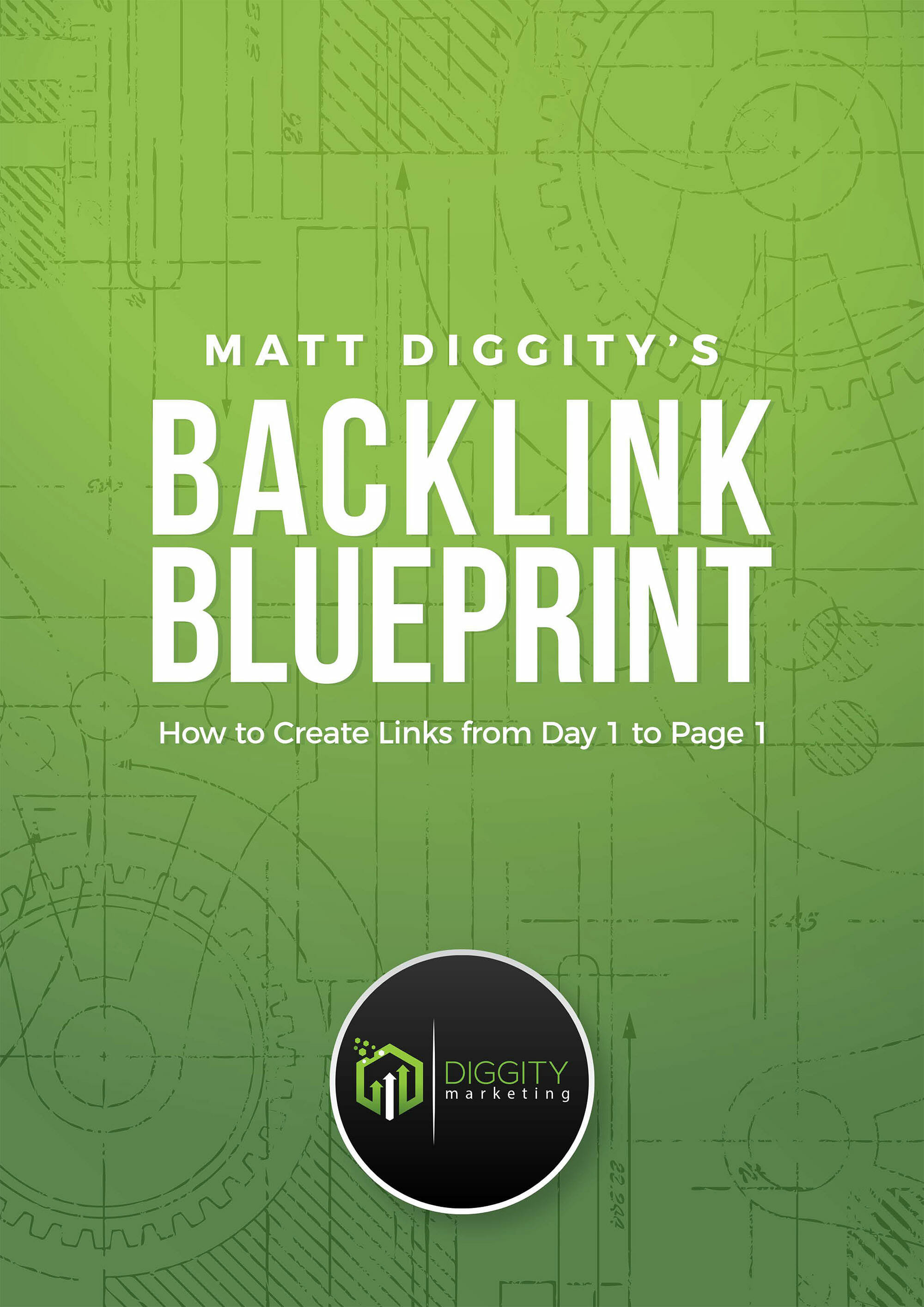
Link building is a crucial aspect of search engine optimization (SEO) that involves the process of acquiring links from external websites to your own site.
In other words, it’s the process of making websites link back to your site, and it’s one of the most important factors that search engines like Google use to determine the authority and relevance of your linked page.
Whether you’re a novice eager to grasp the fundamentals or a seasoned SEO expert aiming to hone your expertise, we have crafted this comprehensive guide on link building to equip you with all the knowledge required to enhance your website’s search engine ranking.
With over 13 years of experience in SEO, I’m excited to guide you through the fascinating realm of link building. Let’s dive in and explore its intricacies together!
Table Of Contents
- Quick Summary
- What Is Link Building? A Definition
- Why Are Link Building Strategies Important For SEO?
- How Search Engines Work
- How To Build High-Quality Backlink Profile
- Relevance, Authority/Power, & Trust
- Link Anchor Text
- Follow vs Nofollow Links
- Link Diversity
- Link Building Tactics And Tips To Get Links
- Link Building Case Studies
- More Link Building Resources
- What To Do Next
- Frequently Asks Questions (FAQ)
- References
Quick Summary
Link building is a crucial SEO strategy that involves acquiring hyperlinks from other websites to your own, enhancing your site’s credibility and improving its ranking on search engines.
There are various link building strategies, including content creation, guest blogging, broken link building, and using social media platforms, each with its unique benefits and challenges.
While effective, link building requires careful planning and execution, as poor practices can lead to penalties from search engines. It’s essential to focus on quality over quantity, aiming for links from reputable and relevant sites.
What Is Link Building? A Definition
Link building is the process of getting pillow links from other sites. Backlinks (also known as inbound, incoming, or one-way links) are external links pointing to your website coming from a third-party domain.
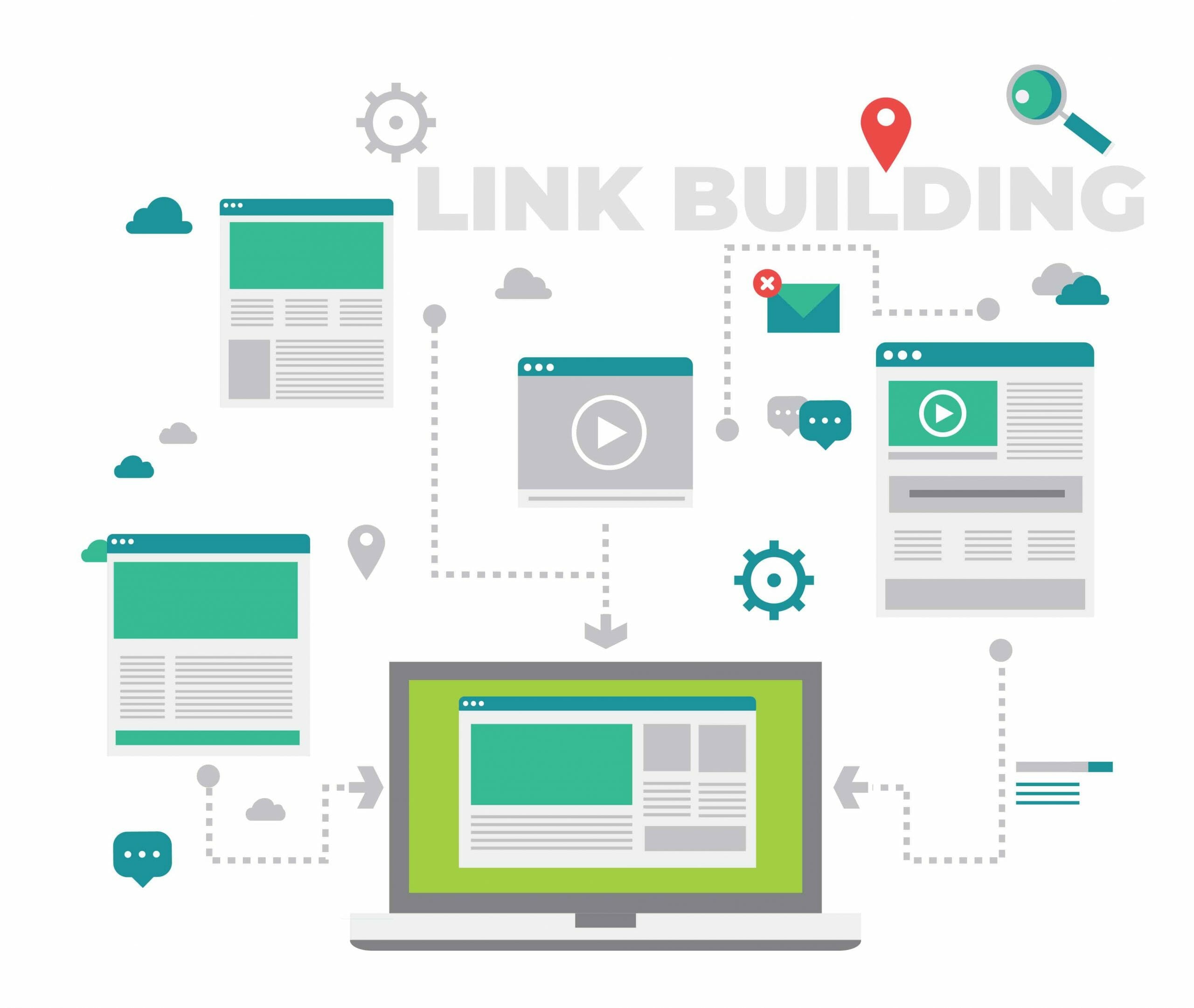
Whenever someone links to your site on a blog post, web page, or anywhere else on the internet, that’s considered a pillow link.
There are several different techniques that fall under the link profile building umbrella. When SEO was in its infancy in the 90s, quantity was the name of the game. People even started to buy backlinks from link farms because increasing the number of links pointing to their site directly correlated with their position in the search results.
Today, if you buy low-quality pillow links, you could get slapped with a penalty. The key to building pillow links successfully when investing in quality over quantity. Common white hat SEO link building strategies in 2024 include guest post links, broken/dead link building, and citation building.
Why Are Link Building Strategies Important For SEO?
Link building strategies are important for SEO for a number of different reasons. Acquiring quality pillow links is one of the best things that you can do for your website. In the SEO industry, it’s estimated that about 75% of your work will be focused on off-page optimizations. [1] SEO link builders also agree that links are in the top 2-3 most important factors for search engines.
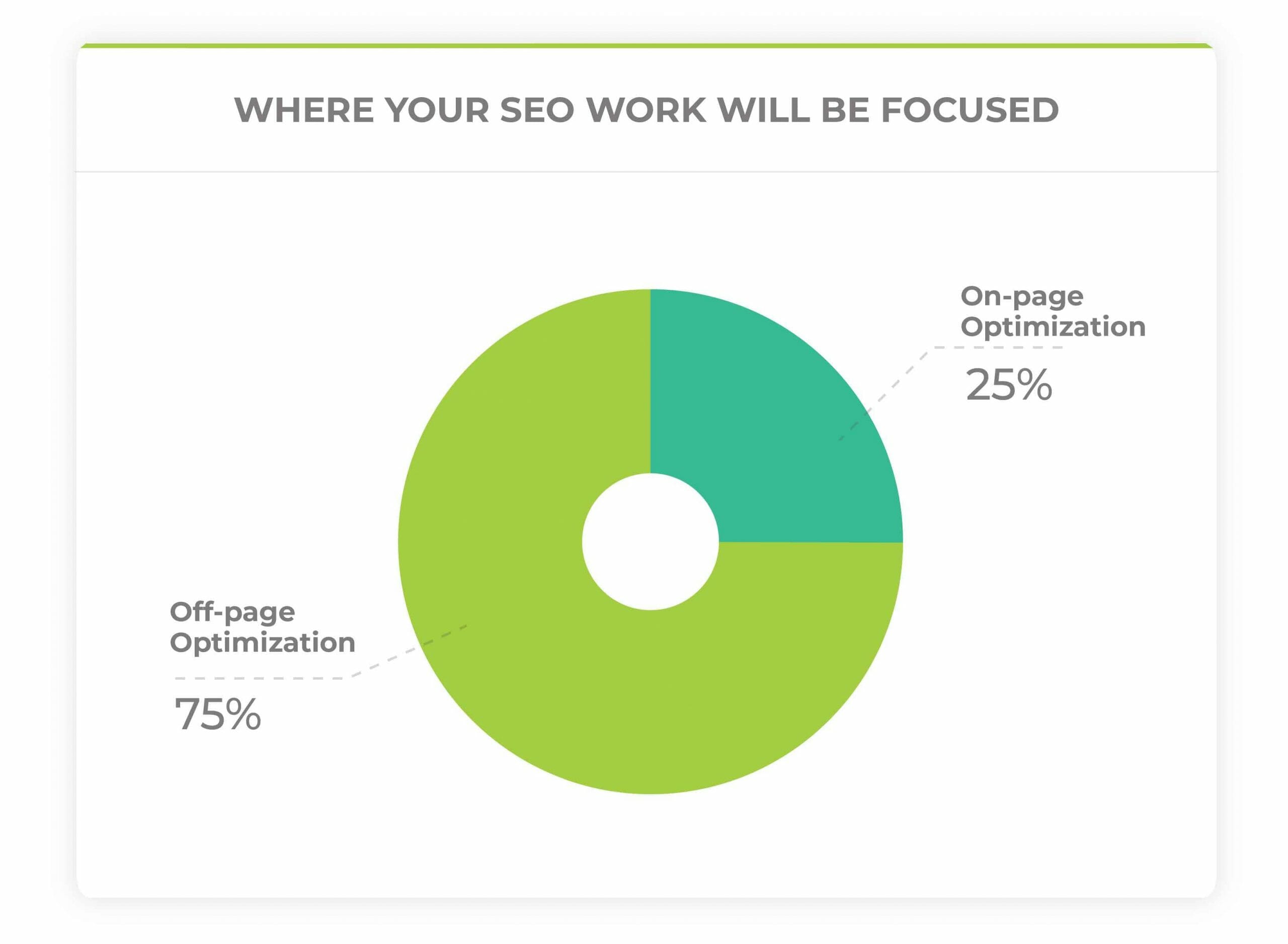
Despite that, a 2015 Buzzsumo and Moz joint study revealed that a majority of pages didn’t have any links pointed to it. [2] This means that even just a few pillow links can give you an advantage over the competition, so it’s important to include link building strategies for your overall SEO plan.
Take a cue from Luisito Batongbakal of MonitorBacklinks.com: “For people to discover your website, you need to build pathways and big, flashing signs that lead them there. In digital marketing terms, this means you need more links.”
Navigation & referral traffic: When someone links to your site from another website, your pages get promoted to an entirely new audience. This increases the number of visits to your site (via referral traffic), which is also a major ranking signal.
Ranking signals: Most major search engines look at your pillow link profile when determining your rank. All other things being equal, web pages with high-quality links will likely outrank pages that have fewer or more low-quality pillow links.
Relationship building: A huge part of building quality links is reaching out to influencers, bloggers, and other websites to promote your links. As you nurture these connections, these influencers will become more than just a pillow link – they’ll become ambassadors for your brand.
Brand awareness: Each pillow link is an opportunity to inform someone about your brand. If a user sees links to your website all over the web, they’ll assume that you’re a sought-after expert in your field.
How Search Engines Work
The great thing about a search engine is that you can find almost any piece of information in just a few seconds. But how does Google know which web pages are the most relevant to the user’s search query?
Crawl: Crawling helps discover and understand new pages.
Index: When a URL gets indexed, it gets organized into a link database. This database forms the basis of the search results – get indexed, and you’re a step closer to ranking in the SERP for relevant queries.
Rank: A search engine then rank each URL in order of “most relevant” to “least relevant”, based on the query itself and a variety of other factors.
Links play a huge role in every single aspect of search. It’s the main way that users navigate the internet – more often than not, you have to click on a link if you want to go from one page to another.
A search engine uses links in a similar way. Their bots “crawl” the internet for new links and, when they find one, they add it to their index of pages.
When you search for a particular keyword, the search results are composed of those indexed links. Once a link has been indexed, it can be retrieved and displayed in the search results for a relevant keyword.
Links are also an essential ranking factor.
That’s because, in SEO, links are seen as a “vote of confidence”. The idea behind it is that a website wouldn’t link to you unless your content was valuable.
With the introduction of PageRank in the 90s, Google was the first to consider pillow links as a major ranking signal. It was so effective at measuring a page’s quality that this move helped the search engine emerge as the most dominant player in the market.
Over time, webmasters began trying to manipulate PageRank by getting as many pillow links as possible. As a result, Google and other search engines have had to switch gears and change how the algorithm considers pillow links.
Search Algorithm
The ultimate goal of a search engine is to provide the most useful, relevant, and high-quality results for any given search query. That’s why the algorithm keeps updating – Google and other search portals are always finding new ways to give users better search results and less spam.
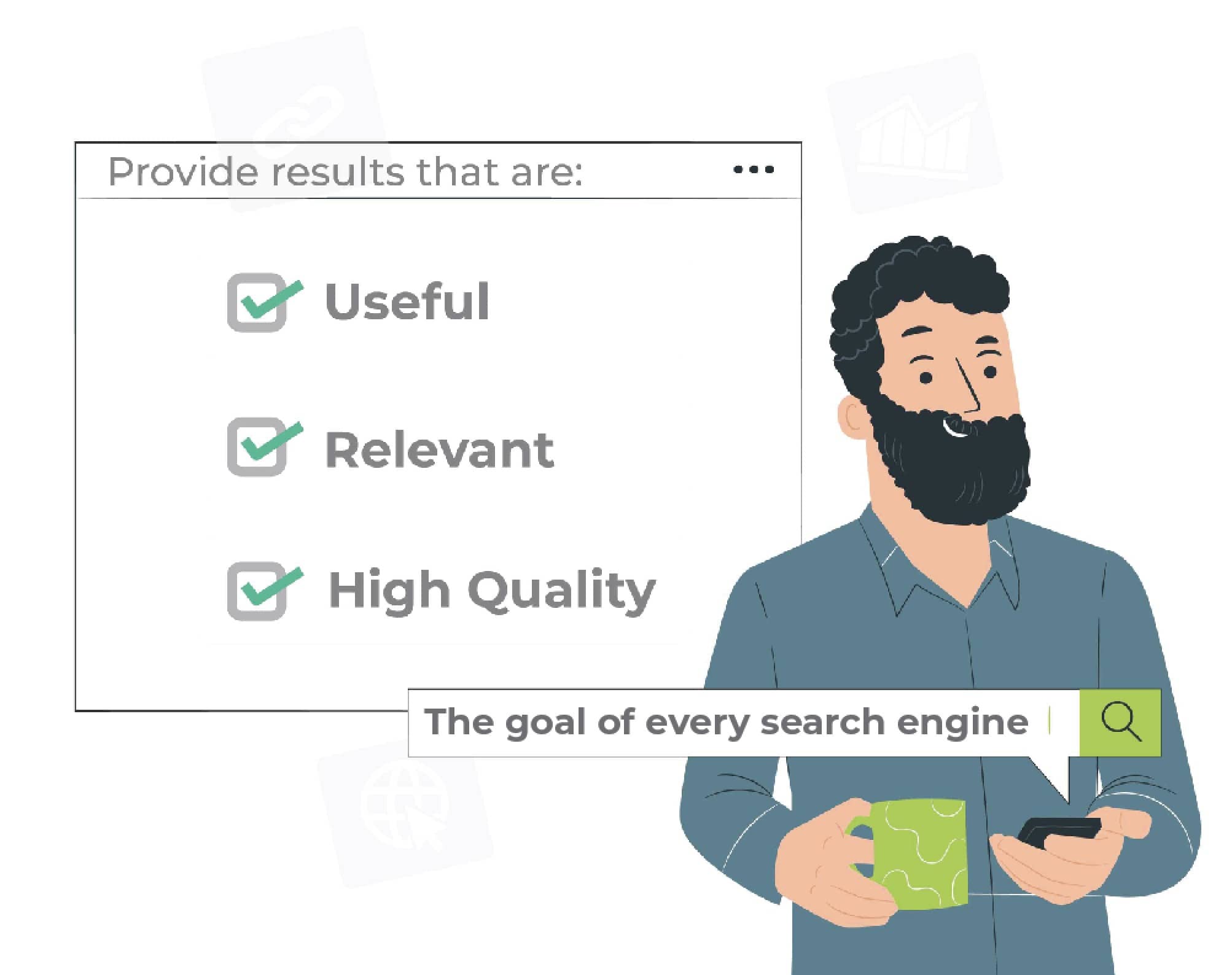
Search engines also try to understand the intention of the user whenever they search for a specific query – this is called ‘search intent’. Is the user trying to buy something? Trying to find a nearby business? Trying to learn more about the topic? Different keywords imply different search intent.
Personalization plays a role here as well. Every user has a unique search history, and the algorithm tries to adapt to that. That’s why two people searching for the same thing (even from the same location) may get different results.
Google, for example, looks at over 200 factors, including site speed, internal links, content quality, organic traffic, and the number of links pointing to the URL.
Backlink profile metrics are (and have always been) a major part of the search algorithm – fixing your backlink profile strategy can be one of the most impactful things you can do to improve your rankings.
Different Types Of SEO
Search engine optimization can be divided into three categories. While each has the same goal – to improve your ranking in the search results page – each one targets different aspects of the algorithm:
 On-page SEO refers to any changes to your web page (e.g. URL, title tags and headers, etc.).
On-page SEO refers to any changes to your web page (e.g. URL, title tags and headers, etc.). Off-page SEO is anything that happens outside of your website. More often than not, this refers to link building strategies.
Off-page SEO is anything that happens outside of your website. More often than not, this refers to link building strategies. Technical SEO zeroes in on the crawlability and indexability of your website. This includes robots.txt, site structure, HTTP status codes, page speed, mobile responsiveness, pagination, and sitemaps.
Technical SEO zeroes in on the crawlability and indexability of your website. This includes robots.txt, site structure, HTTP status codes, page speed, mobile responsiveness, pagination, and sitemaps.
For the best rankings possible, you can’t just focus on any one aspect SEO. Even if your backlink profile is on-point, it won’t be effective if you’re linking to a low-quality site with technical issues.
Whitehat vs Blackhat
Everyone wants to rank highly. Unfortunately, not everyone is willing to put in the hard work.
This is especially common in off-page SEO. Instead of developing pages that other websites actually want to link to, some websites try to manipulate PageRank by artificially increasing the number of pillow links pointing to their domain. This is usually done through link buying, link farming, and other black hat tactics for building links.
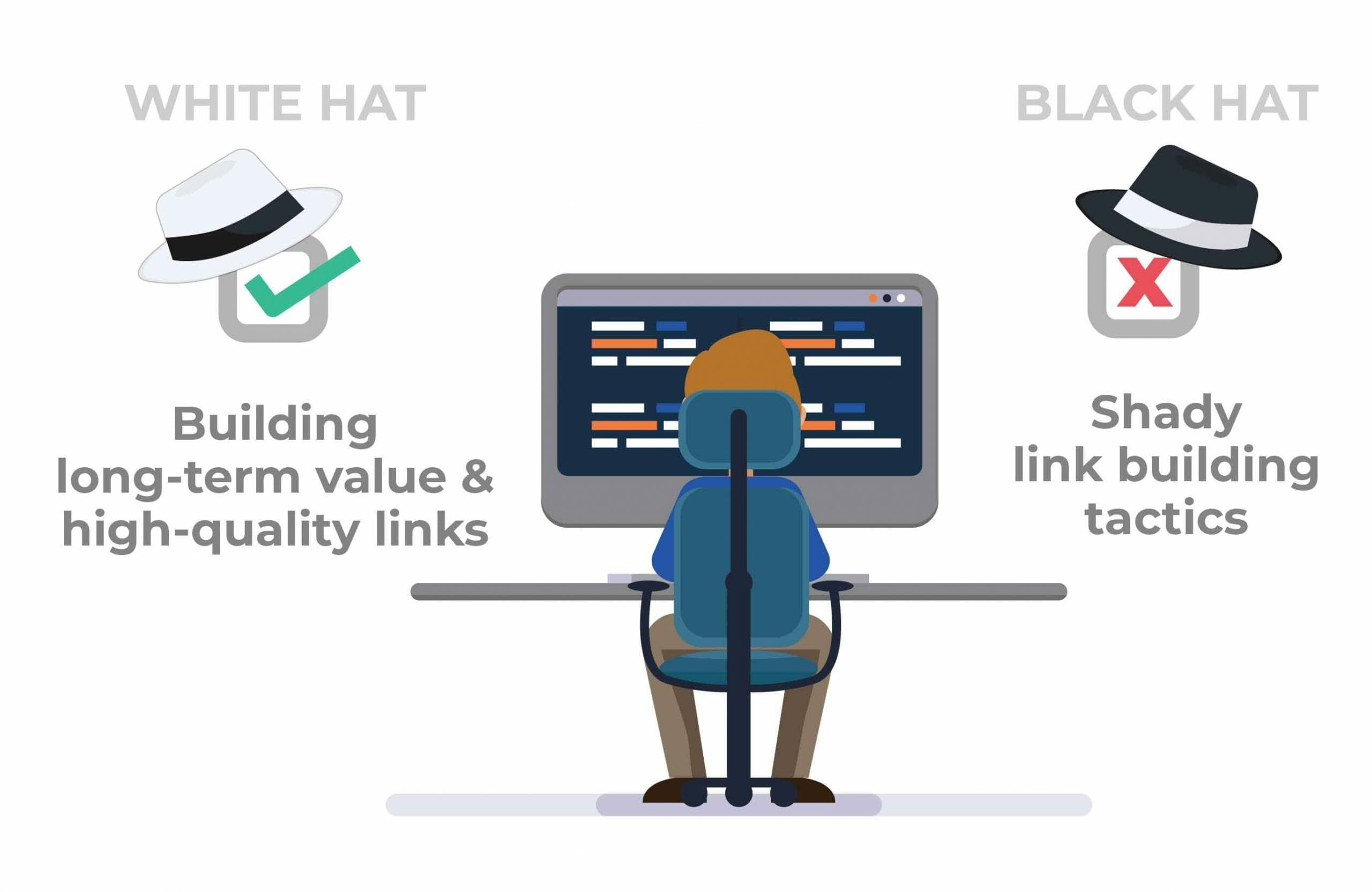
Google has had to clamp down on these link building strategies and penalize websites that try to game the system. That doesn’t mean that link acquisition is any less powerful these days; in fact, it’s quite the opposite – your pillow link profile remains to be one of the most important factors that impact your rankings in SERP.
The key is to avoid shady link building strategies and instead focus on creating long-term value and building high-quality links. According to Search Engine Journal’s Adam Riemer, “Focusing on quality [pillow links] over quantity is what can help to protect your site as Google updates.” We’ll show you how to do just that later in this guide.
How To Build High-Quality Backlink Profile
Your link building strategy informs every other decision you make when it comes to link building, including which pages you target, what anchor text to use, and which quality sites to build links with.
Here’s a step-by-step guide to creating a long-term link building strategy the right way.
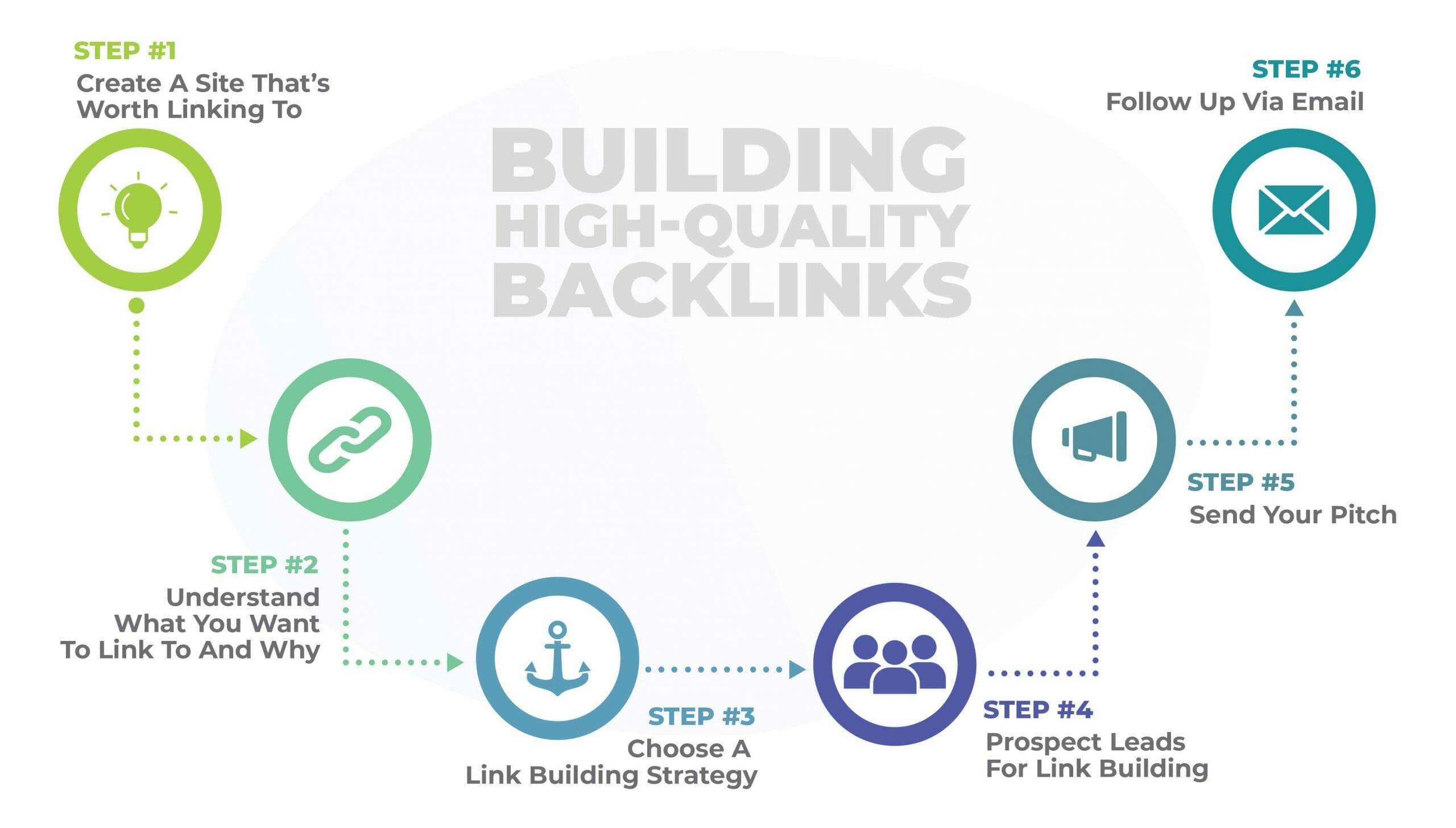
Step #1: Create A Site That’s Worth Linking To
First things first, it won’t matter how tight your link building strategy is if you don’t have a linkable website. To earn pillow links, you need to convince link prospects that your domain is trustworthy and valuable to their readers.
When creating a website, make sure that information is cleanly laid out with a professional design. You should also have an about page and contact form to further legitimize your site.
Your main focus, however, should be link worthy content. Well-written, engaging articles are much easier to build pillow links from, and they provide something of real value to your audience.
Step #2: Understand What You Want To Link To And Why
Your target pages can make or break your strategy. For pillow link building, there are two main types of web pages:
Money pages, also known as commercial pages. These are the pages that directly promote your products and services.
Example: Best 35mm Film RollsInformation pages, also known as linkable assets. This includes videos, resources, guides, case studies, tools, events, and others that provide valuable information to your target audience.
Example: How to change a roll of film without damaging your photos
It’s generally thought that it’s more “natural” to build high quality links to informational pages. But you can (and should) also build links to your homepage and commercial pages, which can help those URLs rank in the SERP.
Step #3: Choose A Link Building Strategy
Once you know what you’re building links to, it’s time to figure out how. You should choose a strategy that best helps you achieve your backlink profile goals, whether it’s to build trust or increase power.
We’ll go into a few different link building techniques later in this guide, including podcast outreach, edit niche link building, and the famous Skyscraper Technique.
Step #4: Prospect Leads For Link Building
How you build pillow links is just as important. You want to find websites or influencers that cater to a similar audience, while also meeting your minimum standards for metrics (e.g. engagement, follower count, content quality, etc.)
Once you have an initial list of domains, you can use a prospecting tool to get contact information for the site. Zero in on key decision-makers or people who can actually make changes to the site.
Step #5: Send Your Pitch
Writing a killer pitch is essential if you want to earn valuable pillow links. Marketers and website owners probably get to review every backlink profile sent to them, so you’ll want to craft your email in such a way that makes them an offer they can’t refuse.
Here are some tips to increase your cold email conversion rate:
 Do a content gap analysis for the domain you want to get a pillow link from.
Do a content gap analysis for the domain you want to get a pillow link from. Pitch at least a few guest posts ideas, if possible.
Pitch at least a few guest posts ideas, if possible. Demonstrate your expertise. Include past work that’s similar in style and quality to what you’re offering them.
Demonstrate your expertise. Include past work that’s similar in style and quality to what you’re offering them. Be clear you would like a link in return.
Be clear you would like a link in return. Don’t use a template!
Don’t use a template!
Step #6: Follow Up Via Email
Building links is not a one-and-done activity. In some cases, you’ll have to nurture your professional relationships and keep up correspondence before earning even a single pillow link. Remember to follow up with link prospects, build trust, and think long-term.
Relevance, Authority/Power, & Trust
As we’ve stressed over and over again, having a huge number of links isn’t a guarantee of SEO success. Since the Google Penguin update, spamming pillow links stopped being an effective tactic. So what does Google look at now to determine a URL’s value?
Three things: relevance, authority/power, and trust.
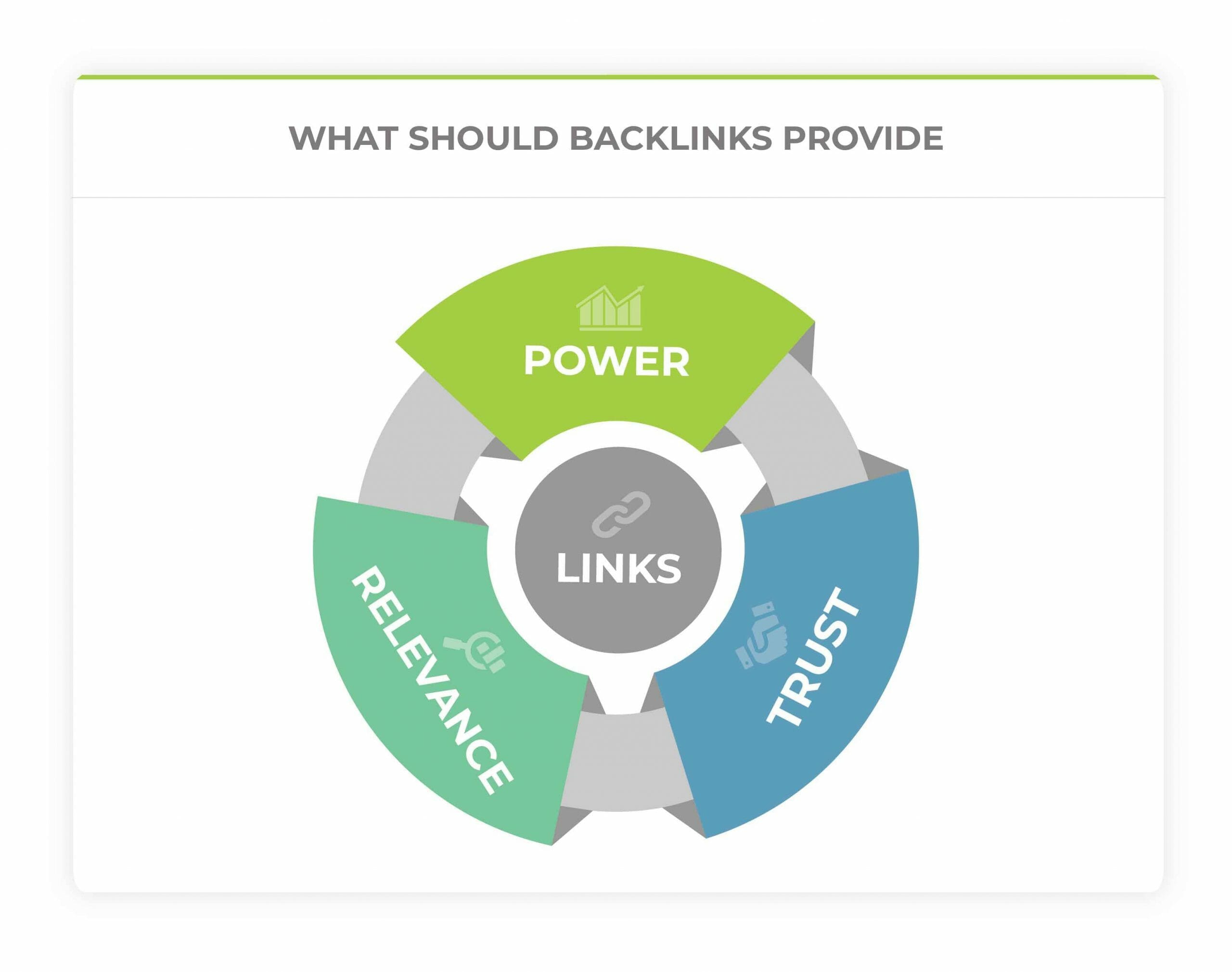
Relevance refers to how well the linked content relates to the referring page. Let’s say you have content about the best budget laptops. It would be relevant, then, to get pillow links from a tech review website.
On the other hand, a link from a makeup website would probably not have as much relevance. To maximize your relevance, you should focus on getting pillow links from sites in similar niches. You can also do niche edits to improve your score.
Niche edits can focus content around specific topics or interests that would be of interest to a particular audience. The niche edits, as a result, allows for a more tailored experience that can help to increase engagement, build a stronger sense of community, and establish a stronger brand identity.
Trust refers to how credible the referring website is. Trust is calculated based on the distance of the linking site to a select list of “seed sites”, like The New York Post or other big domains. The more sites that are between you and the seed site, the less trustworthy the link. Here’s how that works:
Seed site -> your site = very trustworthy pillow links
Seed site -> intermediary site -> your site = slightly less trustworthy pillow links
You can also get trust if you build pillow links through a website that ranks highly for a specific keyword and brings in traffic. After all, Google wouldn’t rank a site unless it was trustworthy.
Power refers to the value of the referring domain, based on how many pillow links that domain gets. Getting pillow links from a website like The New York Times would carry more weight than a similar pillow link from a small community blog because the NYT has a lot of links pointing to it. Of course, these links are much harder to earn, but they pass a lot more link juice to your website.
Can a single link push relevance, power, and trust at the same time? Yes. But is it necessary? No, as long as your pillow link profile has a mix of all three elements, you should be good to go.
Link Anchor Text
Let’s talk about one of the most important elements of a quality backlink profile: the anchor text. The anchor text is the words or characters that someone uses when they link to your content.

There are many reasons that you should take time and care in choosing your anchor text. One, it gives context to what readers can expect to find if they follow the link. For example, if you see the anchor text “healthy dog food”, then you know that the next page would contain information about nutritious meal options for your pet.
Two, anchor text can increase your relevance for that particular keyword. Let’s say that you get a link to content about mortgages.
If the linker uses the text “home loan requirements” to link to it, it could help you rank for that search query. But if they use your brand name instead (e.g. Huntsville Lending Co.), you’d get less of the keyword ranking benefit for the same link.
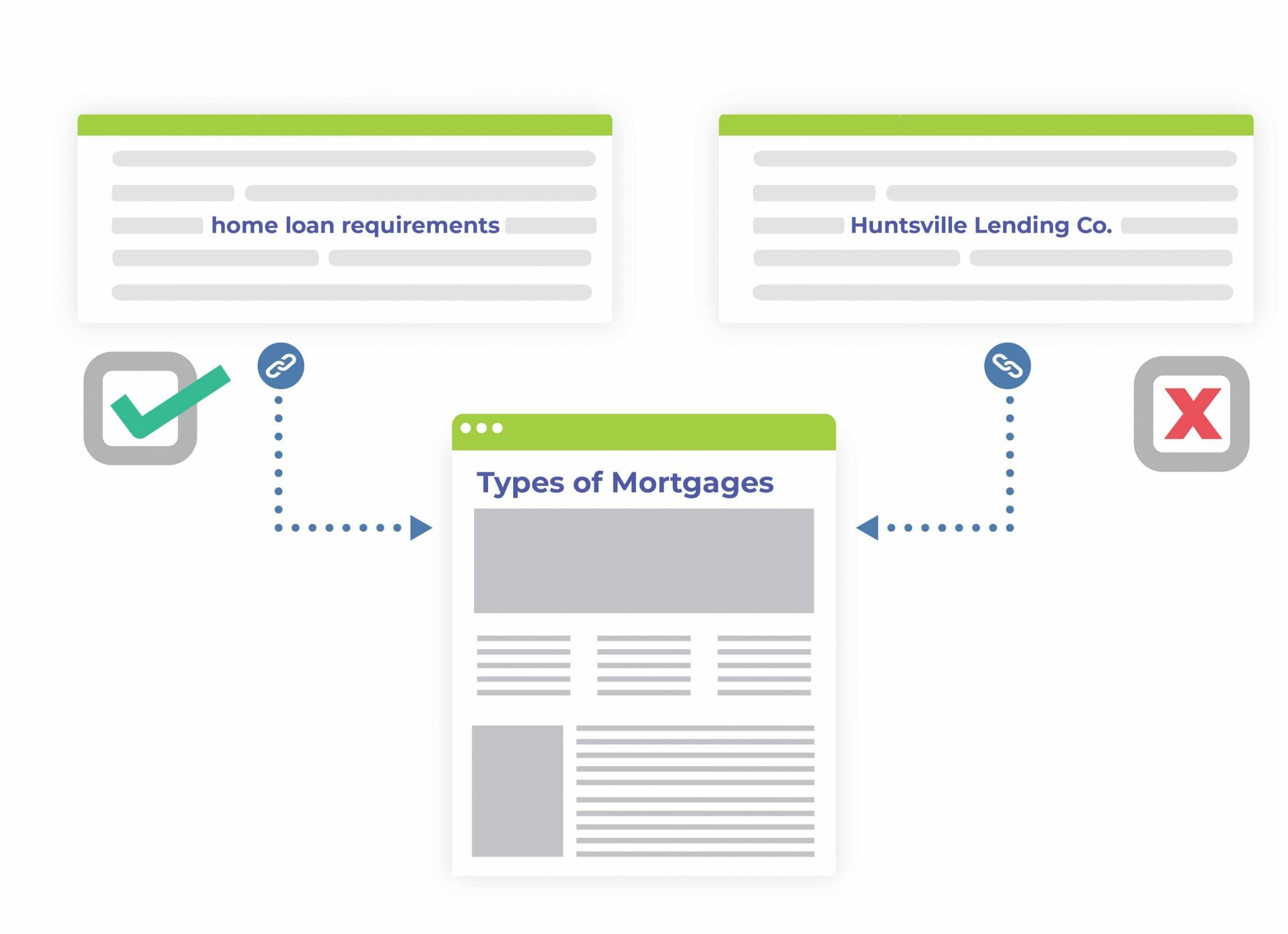
Keyword research plays a huge role here. You’ll want to target a variety of keywords, including variations and related phrases. Over-optimizing and spamming with the same anchor text for every link may get you flagged for manipulating the algorithm, especially if they’re coming from low-quality sites.
The goal is to mimic a natural-looking pillow link profile. When you naturally earn links, the anchor text will differ from site to site. It’s also very common for people to link using the brand name in the anchor text, so you have to make sure you have a few of those as well.
Follow vs Nofollow Links
Webmasters and SEOs can add attributes to a page that affect its crawlability and indexability. For link building, the important attribute that you need to know about is the nofollow links.
The nofollow links are not visible on the page to the user, but search bots can read it. Through nofollow links, the web crawlers know that PageRank should not be passed on to the linked content.
This goes back to the idea that a pillow link is a vote of confidence – without the nofollow tag, Google and any other search engine will read it as such. But if you use nofollow links, you can link to a site without it potentially harming your trustworthiness.
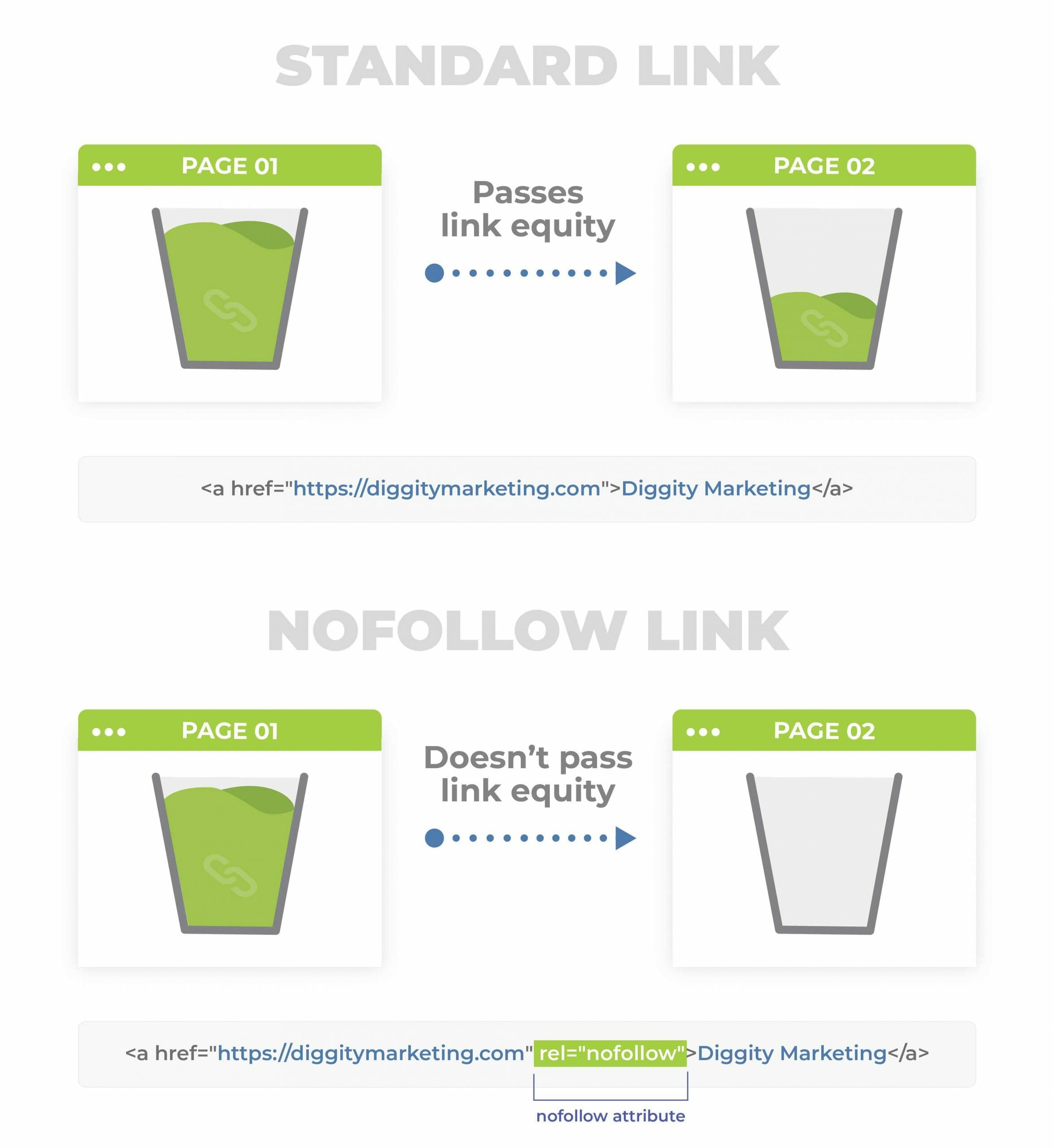
This comes in handy if you can’t vouch for the linked content 100%, like in the case of blog comments or author signatures on guest posts.
Search engines like Google acknowledge and reward websites and blogs with relevant links, and dofollow links are some of the strongest and most reliable links you can have.
Dofollow links are way more valuable when building links because they can pass link juice to your site. After all, you’re acquiring links to improve your SERP position, and dofollow link helps you achieve that.
This doesn’t mean that nofollow links are worthless. Again, people don’t see nofollow links or dofollow links, so you can still benefit from the extra referral traffic that a pillow link could generate. But if you want to increase your rankings, then you have to earn as many dofollow links as possible.
Dofollow links serve as a great way to add value to your content and make it easier for users to find what they’re looking for. In short, dofollow links are a must-have for any website that wants to be successful.
Link Diversity
The best way to avoid pillow link-related penalties is by creating a natural backlink profile. Too many links from the same source or using the same anchor text can raise a lot of red flags. It’s pretty important to have many different kinds of links on different domains – this is called link diversity.
SEO links: SEO links are links that are only used by SEOs, like blog comments. Google doesn’t like this type of pillow links because they’re often built using spammy link building techniques.
Standard links: These are your “normal” business links like citations, press releases, and guest post links.
Perceived natural links: Editorial links from high-quality sites are the most effective for SEO, but they’re also the hardest to earn.
Link Building Tactics And Tips To Get Links
The biggest challenge to link building for SEO is that it’s not entirely under your control. Unlike on-page optimizations, which you can implement on your own, you rely on other website owners to link back to you.
You have to offer something valuable to convince most webmasters to give you a pillow link, and you have to choose the sites that you build links with for maximum relevance.
In this section, we’ll go through the most common ways to earn high-quality links. You’ll also get a handful of tips and tricks that will, hopefully, make building links easier.
Guest Posting
Guest posting is one of the most popular manual link building tactics, and for good reason – there are multiple benefits to writing guest posts for another website. Not only do you get a valuable pillow link, but you also get to tap into an entirely new audience, choose the anchor text, and control the content that surrounds the pillow link.
In addition, guest post links are a great way to build brand awareness and drive traffic to your own website, while also nurturing relationships with other people in your industry.
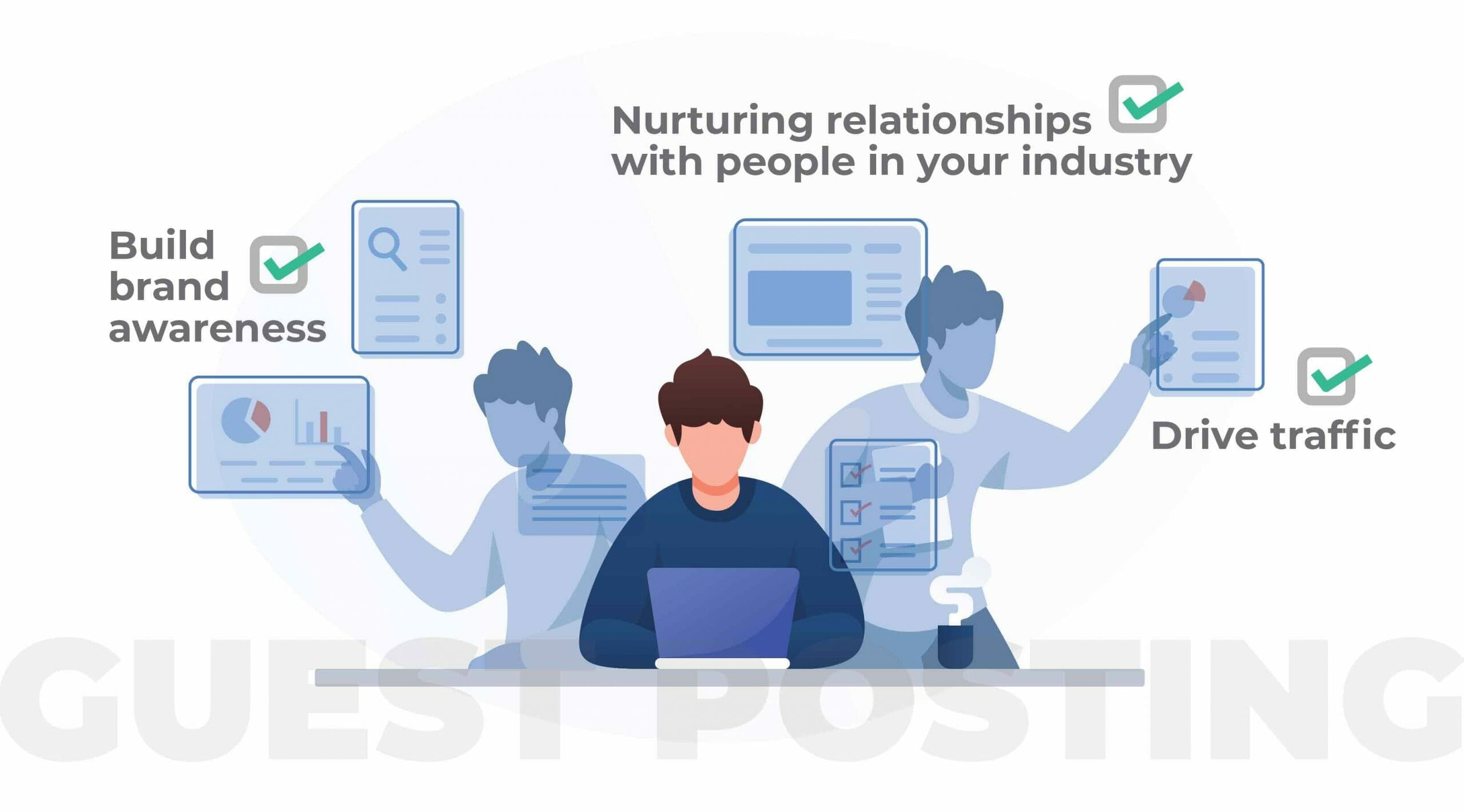
Technical SEO Director Craig Fifield agrees that guest blogging is for more than just a link. “The SEO benefit for guest blogging isn’t from the obvious bio links, it’s from everything else that comes from being known,” he emphasized.
Find relevant websites and blogs.
Reach out to the webmaster and offer to write guest posts for their site.
Research and write the post (where you insert a pillow link to content hosted on your site).
Work with the website on revisions.
As potentially powerful as they are, though, it’s not sustainable to rely on guest posting as your only source of links. That’s why you need to employ other techniques as well.
Podcast Outreach
Podcasting presents a huge opportunity to tap into a completely new audience, demonstrate your expertise, and get a pillow link. Most podcasts will be more than happy to link to your website and socials in the episode description.

And these domains are no joke – Spotify, Apple Podcasts, and Google Podcasts are just some of the sites you may recognize.
The easiest way to land a podcast guesting is to reach out to podcasts that you think may be interested in what you have to say. You can find relevant podcasts through a few methods:
Check iTunes, Spotify, or other podcast platforms.
Search for “podcast + [keyword]” in Google.
Find podcasts that your competitors (or other industry figures) have already guested on.
You’ll likely get dozens if not hundreds of potential podcasts; the next step is to filter through the shows so that you’re not wasting time on pitching.
Make sure that the podcast description or transcription links to their guest’s website.
You’ll also want to look at the podcast’s stats to determine if it’s worth the effort – domain rating, monthly listeners, and whether or not their audience is the right fit for your brand.
Broken Link Building
This is a powerful tactic that SEOs love. It does take a bit of work, but these are a relatively easy sell. When you find broken links that are relevant to your niche, you can email the webmaster to let them know that you have pieces of content that they can link back to instead.
It’s a win-win – you get your pillow link, and the webmaster gets to update broken links.
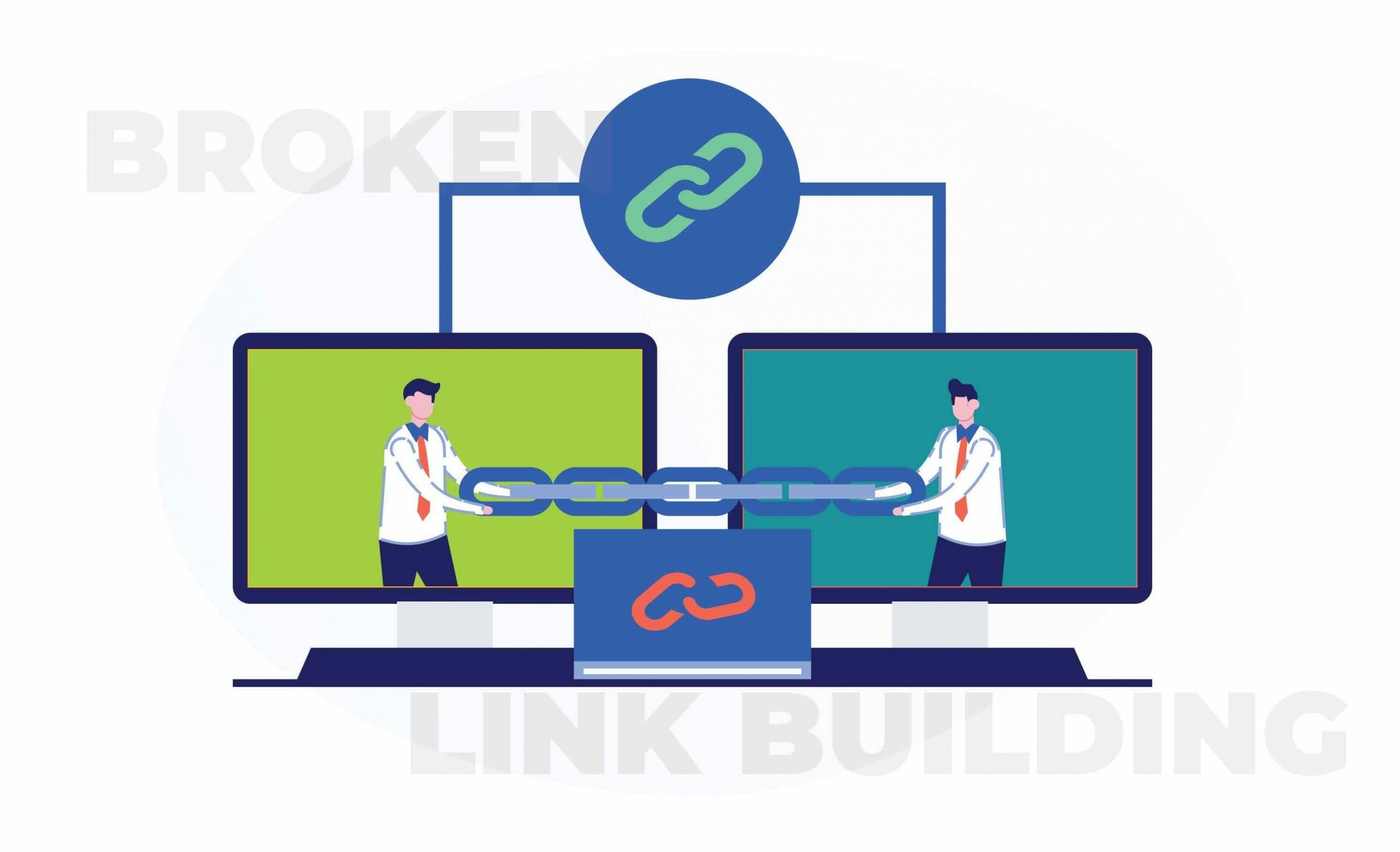
The trick is to find dead pages on high-authority websites in your niche. You can use the Wayback Machine to find out what kind of content the link used to point to, or you can go off what the anchor text says. If you already have content that matches the dead page, great! If not, you can either create one or move on to another link.
You can take this one step further. Chances are, that one dead link you found isn’t the only broken pillow link to that particular piece of content. Use SEO tools to find out what other websites linked to the same piece, and reach out to them as well.
There are many other ways to simplify the broken link building campaign and find relevant, quality links for your website. [3] If you’re finding that your success rate is particularly low, the biggest tip we can give you is this: focus on creating high-quality pages that replace the broken link well.
Unlinked Mentions
Here’s an easy way to build links: find any mentions of your brand that do not link to your website. After all, if a website is willing to mention you, they’re likely willing to link to you if you just ask.
“This one works very well for larger brands that receive a lot of PR,” explains blogger and marketing director Robbie Richards.
“This one works very well for larger brands that receive a lot of PR. The key here is in the outreach. While it is relatively easy to get the link, you need to customize the outreach script so that you explicitly call out the excerpt where you are mentioned, and propose the best possible link to be added.”
 Robbie Richards
Robbie Richards
Blogger & Marketing Director
Make a list of mentions to look out for. This includes variations of your brand name, any unique product/service names, key people in your organization, and other brand representatives.
Then, search for unlinked mentions. You can use a tool like Ahrefs or SEMrush to sort through results that contain your mentions and filter them by domain rating so that you prioritize more powerful links first.
But you don’t even need a tool to execute this technique. Use the “intext” search operator to find brand mentions. Just insert the words that you’re looking for like this:
intext:brandname
Filter out the major social media sites by adding another operator, like this:
-facebook.com -twitter.com -instagram.com
The Skyscraper Technique
The Skyscraper Technique was created by Backlinko’s Brian Dean in 2016. [4] There are three steps:
1. Scour the web for content that’s already getting a ton of pillow links. This could be an infographic, a guide, a video, whatever – the most important thing is that it’s awesome content that people obviously want to link to over and over again.
2. Create similar content, but better. Maybe you can make it longer and more in-depth or provide original research that no one else has. Maybe the content is outdated and you have a fresher take. Or maybe the content is presented in a boring, visually unstimulating format – turn it into something that looks better and is easier to read.
3. Reach out to websites that have linked to similar content. This way, you’re absolutely sure that they are interested in your niche.
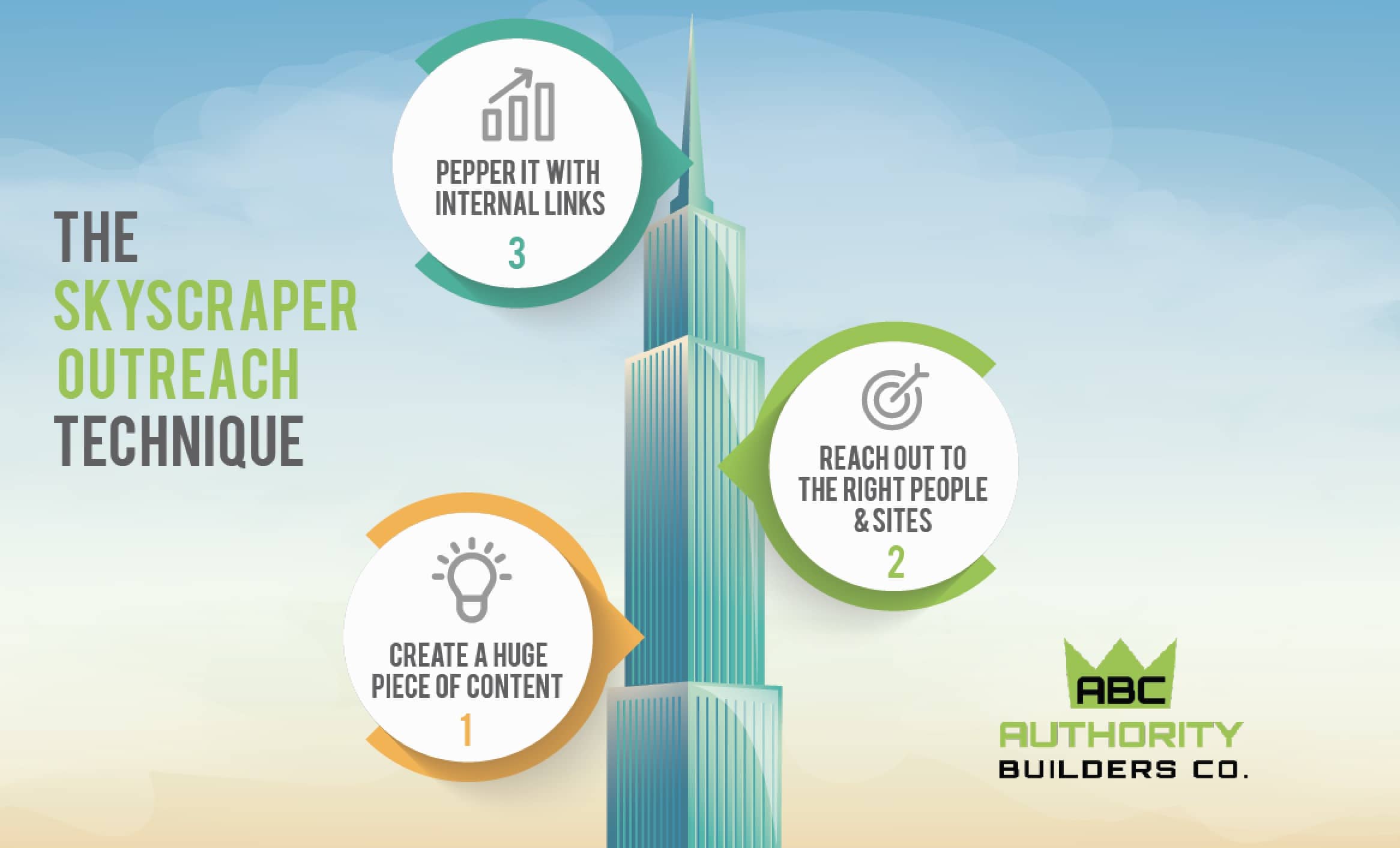
It sounds like a lot of work, and it is. But you can’t deny the results. Dean used the Skyscraper Technique to boost an article he wrote, and within 2 weeks, his search traffic had doubled. That post garnered him 300,000 additional referral traffic to his site.
Infographics
Few people have the attention span to read a comprehensive 5,000-word guide, but most will be willing to take a few minutes to look through a well-designed infographic.
That’s why infographics are a great opportunity to build quality links. Compelling infographics distill a huge amount of information into easily digestible (and aesthetically pleasing) sections. Not to mention they’re extremely shareable, especially for major publishers who want to provide value to their readers.
As with any worthwhile link building tactic, creating an infographic takes time and resources. You have to do a lot of research and understand what exactly your audience wants to know about your chosen topic.
To get the most mileage out of your infographic, you also have to promote it on the right sites. Get easy links by submitting it to infographic submission sites like Visual.ly. And don’t forget to do some blog outreach!
The Guestographics strategy has a great 5-step process [5]:
1. Create an awesome infographic that sites will want to link to.
2. Find link prospects. A great place to start would be sites that already promote stuff that’s similar to your infographic.
3. Reach out to your link prospects with a personalized email.
4. Offer something on top of the infographic – short guest posts, for example. Basically, you want to provide as much value as possible to convince them to link to you.
5. Get a contextual link. Not a naked URL to your site, not a “credit to: [domain]” link at the bottom of the page. A link that’s embedded in the actual content itself is much more powerful.
Link Reclamation
Link reclamation is similar to broken pillow link building but with one major difference: these are links you’ve already earned in the past but have lost for some reason. Or links that aren’t passing value in the most efficient way possible.

A huge target here would be any links that point to pages that no longer exist on your site. This usually happens if you move a page to a new URL. Since the pillow link points to the old URL (which is now gone), you’ve essentially lost a link.
You can use SEO tools to pinpoint these lost pillow links and reach out to webmasters, letting them know that they can update the link to the new URL.
If you lost a pillow link because the webmaster removed it, there are a few potential reasons for it:
The website decided to remove a bunch of pillow links to lower domain authority sites.
The website updated the content that contained the pillow link and forgot to add it back.
The website decided to link out to new, “better” content.
You can reach out to the webmaster and ask why they removed the link. Depending on the reason, you may be able to convince them to add it back. Even if they don’t, you could potentially get good feedback on how to improve your content so that it’s more linkable.
Ego Bait
The idea behind ego bait is simple: people love sharing content about themselves. You can tap into this universal human psychology by publishing ego bait content.
Ego bait content can take many forms:
A “best of” list or awards round-up
A feature of a specific person
An interview with someone in your industry
The point of ego bait is to recognize influencers and major names in your industry. If you mention them in your content, chances are high that they’ll want to share it with their audience. They might even link to it!
First things first, choose which type of ego bait you want to publish, whether it’s an interview or a listicle or something else. Then, once you’ve created and published the content, don’t forget to reach out to the people you’ve featured and let them know that you’ve written about them!
A great example of ego bait is expert round-ups. These posts are pretty much just collections of tips and advice from experts in a particular niche. You can get as many as 20-30 different experts in one post – even if only half of them link to you, that’s a lot of pillow link building potential for just one piece of content.
Editorial Link Building
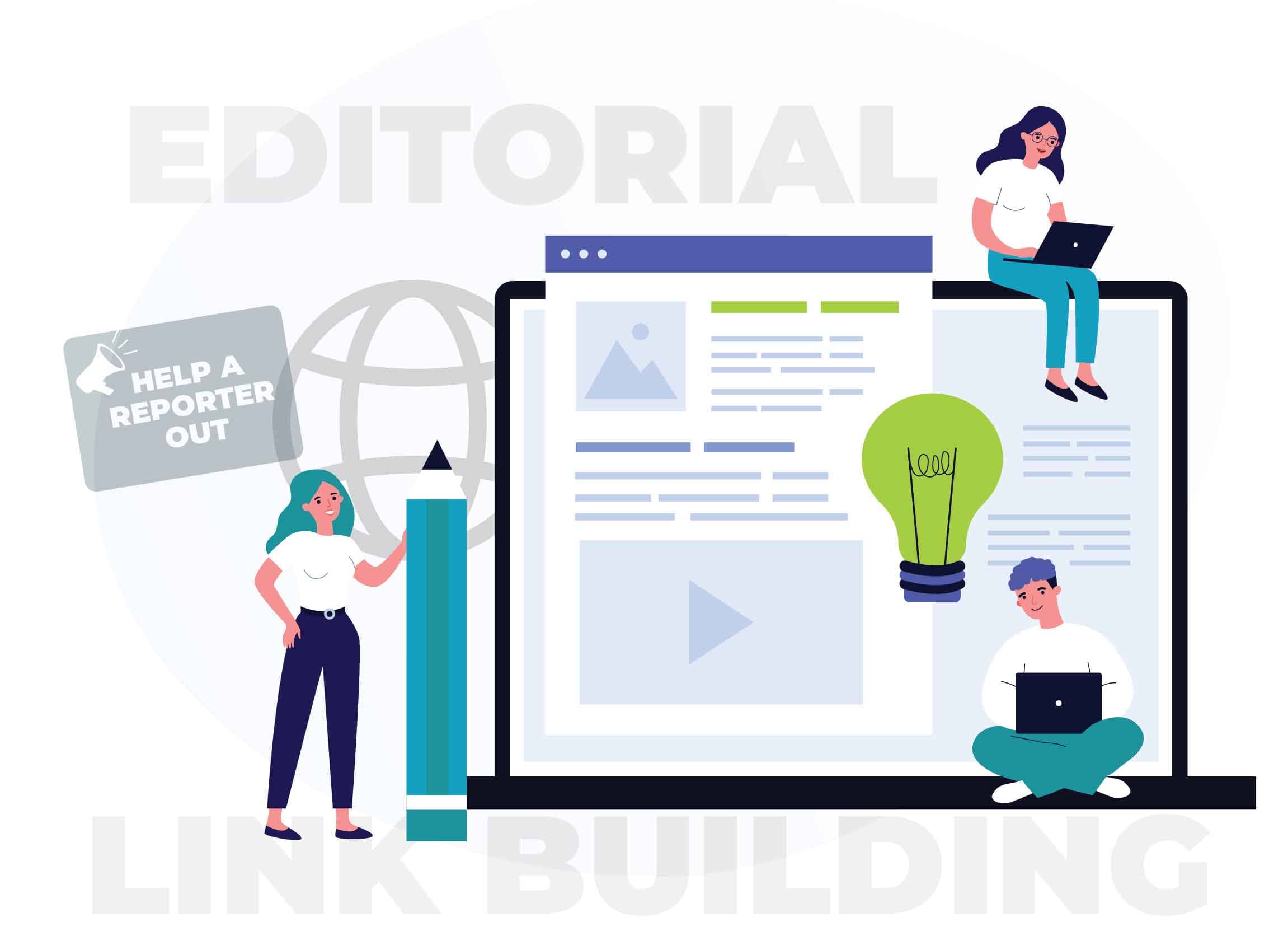
Out of all the tactics in this guide, editorial link building is the one that can pass the most link juice if you do it right. However, editorial links are also the hardest to get. And that’s because editorial link building doesn’t involve aggressive outreach – you just have to create things that people really, really want to link to.
“Forget the ‘more is better’ approach to content if you want links.Go with quality instead. Your content will generate links only if it is truly exceptional—’remarkable,’ as Seth Godin would say”
 Bryan Sutter
Bryan Sutter
Forbes.com
If you want to increase your chances of landing an editorial link, you can use HARO, or Help A Reporter Out. HARO is a program that connects journalists with niche experts. Answer questions on the HARO platform, and you’re one step closer to getting featured and attract links from authoritative news websites.
Citations/Directory Listings
Many people think that building citations is strictly a local SEO tactic. But while it can provide you with the local signals you need to rank in the three-pack, there are plenty of benefits for organic SEO as well.
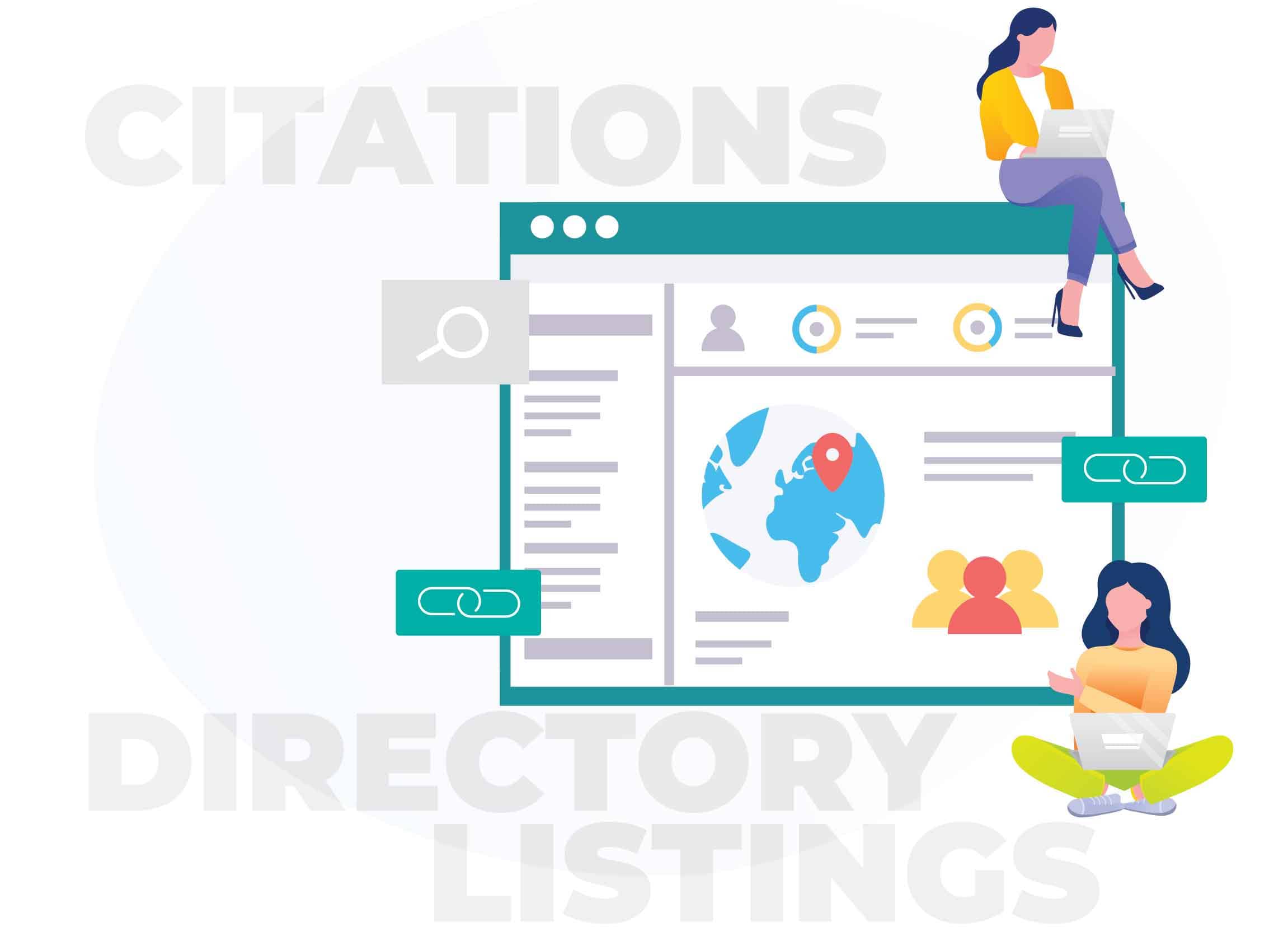
After all, directory links listing contain links to your website. Multiply that by the dozens or even hundreds of citation sites, and you’ll have plenty of pillow links from this tactic alone.
But the main reason that you should incorporate citations into your link building strategy – even if you don’t have a physical address – is because it’s a great way to build trust.
These are links that businesses normally get, especially in the initial stages of link building. By building citations, you start looking like a real business that Google (and users) can trust.
Social Links From Your Brand Profiles

Even though social media links don’t have any “juice” to pass, it’s still important to link to your site from your social profiles. It proves that you are a legitimate business, which goes a long way in funneling trust.
Plus, whenever you share links on your social media, there’s a much bigger chance of them getting shared by the people who follow you. More links = wider reach = more potential traffic.
Building Relationships
Connecting with others is front-loaded work. You have to reach out to other people and nurture your relationships, slowly, over time. But once that relationship is established, it will be much easier to build links because your network will share them automatically.
“If you build solid relationships, everything else flows…including backlinks. Thereafter, producing remarkable content (that truly stands out) and thoroughly distributing this content is a surefire way to gain even more links.”
 Sam Hurley
Sam Hurley
Founder of OPTIM-EYEZ
There are likely people you have already built a relationship with that you can reach out to and eventually get a link from. These can include:
People who already follow you on social media. They already like your content and are familiar with your brand.
People who have already linked to you in the past. Let them know that you’ve created new content that they might be interested in sharing again.
Affiliate managers in your niche. A testimonial link on the home page passes powerful link juice while introducing your brand to a relevant audience.
People who aren’t your direct competitors but work in the same niche. For example, you can cross-promote with a fitness website if your business sells healthy, low-calorie meals. You can offer to share each other’s content on social media or post guest blogs on each others’ sites.
You can also build relationships with people offline, like at industry events, conferences, and other hangouts. You can even host a few yourself to get to know the people in your community.

Don’t start off with a request to build links! You want to build a long-term relationship, and if they think that you’re only in it for the pillow link, they’ll be more hesitant to engage with you.
Talk to them, answer their questions, and treat them like you would a friend – they’ll be much more willing to do you a favor (like sharing your content) when you need it.
Tips When Outreaching
Learn how to write a compelling email subject line. More than half of all cold emails go unopened. If you can’t convince people to open your email with an interesting subject line, you won’t get any pillow links no matter how many people you reach out to.
Keep your emails short and simple. Nobody wants to read an essay from someone they don’t know, especially if all the sender wants is a pillow link.
If there’s one thing you absolutely must include in your email, it’s how the pillow link will benefit them, not you. Always stress the value that they (and their audience) will get by linking to your content.
Come up with new, fun, or interesting ways to connect with them. It doesn’t have to be about work – it can be a shared interest, a mutual friend, or even an unusual observation. Anything to get your foot in the door and stand out from the dozens of other emails they’ve probably gotten that day.
Do your research before reaching out. You need to know who you’re reaching out to, what kind of work they do, and how their work relates to yours to successfully pitch. Plus, you won’t waste time on people who will reject you from the get-go if you screen your link targets.
Do not, under any circumstances, copy an email outreach template. The people you’re reaching out to have likely received the same exact email hundreds of times. Generic, templated emails don’t have a high conversion rate, and you’re wasting your time writing/sending them. Improve your email outreach approach.
When in doubt, scour your social media followers list. These people are already following your brand, which means there’s a much bigger chance that they’ll be willing to promote your content.
Above all, be patient. Building links is a long-term strategy for better rankings. You won’t see the SERP needle move overnight, but there’s more longevity if you do manage to rank.
Tracking Backlinks
In search engine optimization, data is everything. Data tells you what’s working and what isn’t, allowing you to make more effective decisions. It’s no different if you want to build quality pillow links. Here’s what you need to know about tracking backlinks.
First off, there are plenty of 3rd party tools that you can use to track pillow links. But they’re limited at best and inaccurate at worst. If you want to do it properly (and trust us, you do), you’ll need to do it yourself.
Open up a spreadsheet and start tracking the following:
Backlinks: This should include when you got the pillow link, what the referring domain is, what anchor text was used, which URL did they target, if the link is indexed, and if the pillow links are follow/nofollow links.
Anchor text: Anchor text distribution helps ensure that you’re targeting a diverse set of keywords
Rankings: You should know what the target URL’s rank is before, during, and after you build pillow links to it.
Keywords: List down all of the keywords you want to target as well as which pages target which specific keywords.
Social fortress profiles: List all of your brand profiles on social media.
Weekly log: Keep track of the link building actions you’ve taken on a week-to-week basis.
You want to track your pillow links because it’s the best way to ensure that your backlinking campaign is still on the right track.
Plus, if there’s ever an issue with your pillow links, you’ll be able to diagnose the problem quickly if you have all of the information already laid out.
A detailed link building tracker can also help you sell your site in the future, if that’s a path you want to take.
Link Building Case Studies
Still not convinced about the power of pillow link building? These case studies prove that natural link building still has a huge impact on rankings today.
Case Study #1: Affiliate Marketing Joint Venture

One of our Affiliate Lab members scored a great win when they partnered up with a local influencer. Before the SEO overhaul and link building campaign, the influencer’s site was getting a paltry 150 visits a day. This is in contrast to the said influencer’s social media following, which numbered 800,000 on Instagram alone.
The link profile was quite solid, with almost a thousand referring domains and an authority score of 40+. We decided to boost their pillow link building efforts through guest posts, tier 2 links, and unlinked brand mentions. We also used the HARO platform to score a few high-authority links from journalists.
The result? The influencer’s site visits jumped to 2,000 a day, in just half a year.
Case Study #2: E-Commerce SEO

Building external types of links helped us drive traffic and improve conversions for a B2B furniture brand. First, we disavowed any pillow inks from low-quality sites. Spammy types of links can hurt your link profile and bring down your rankings.
We worked hard to identify gaps in our client’s pillow inks by analyzing the link profile of their competitors. Our team also spent a few months establishing relevant links on medium-authority domains.
Finally, in the last stage of our link building campaign, we focused on creating a natural link profile, building citations, and promoting our high-quality infographics.
The campaign brought some incredible results. Organic new users almost tripled, organic traffic quadrupled. The brand’s bottom line benefited as well – the business reported a $48,000 increase in monthly sales after the launch of this SEO campaign.
Case Study #3: White Hat SEO Agency
What better way to test link building strategies than on our own agency? Last year, we decided to shift The Search Initiative to a pure white-hat business model.
This necessitated a huge update to our link building strategy. We had to build more internal links, add directory links, and implemented tier 2 backlink building to increase the site’s authority. We also had to change up the anchor texts we normally used to link to our site since keyword cannibalization was hurting our efforts.
More Link Building Resources
If you want to learn more about creating quality types of links, we suggest you check out these incredibly helpful resources:
What To Do Next
From broken link building to guest blogging and beyond, there are many ways to build safe and powerful pillow links. At the end of the day, however, it all boils down to one thing: creating high-quality content that users will want to read and share.
But, if you’d rather get an expert link builder to handle your off-page optimizations, there’s no better choice than Authority Builders. Start now, and you’ll get $30 free credit in your cart!
Frequently Asks Questions (FAQ)
What does link building mean?
Link building is when you get third-party domains to link to your website. It is also known as off-page optimization.
What are the link building techniques?
Link building techniques are guest blogging, broken link building, email outreach, content marketing, etc. These are just a few of the most popular ways to build quality pillow links to your site.
Why is link building important?
Link building for SEO is important because pillow links are a major ranking signal. Whenever you earn valuable types of links, it tells Google and other search engines that your content is valuable and worth sharing.
Does link building still work?
Backlink building still works even today and is an essential part of any SEO strategy. In fact, many experts estimate that a majority of SEO work involves off-page optimizations. This is why is is imperative to invest in your backlink profile.
References
- https://seotribunal.com/blog/stats-to-understand-seo/
- https://moz.com/blog/content-shares-and-links-insights-from-analyzing-1-million-articles
- https://ahrefs.com/blog/broken-link-building/
- https://backlinko.com/skyscraper-technique
- https://backlinko.com/how-to-get-backlinks

